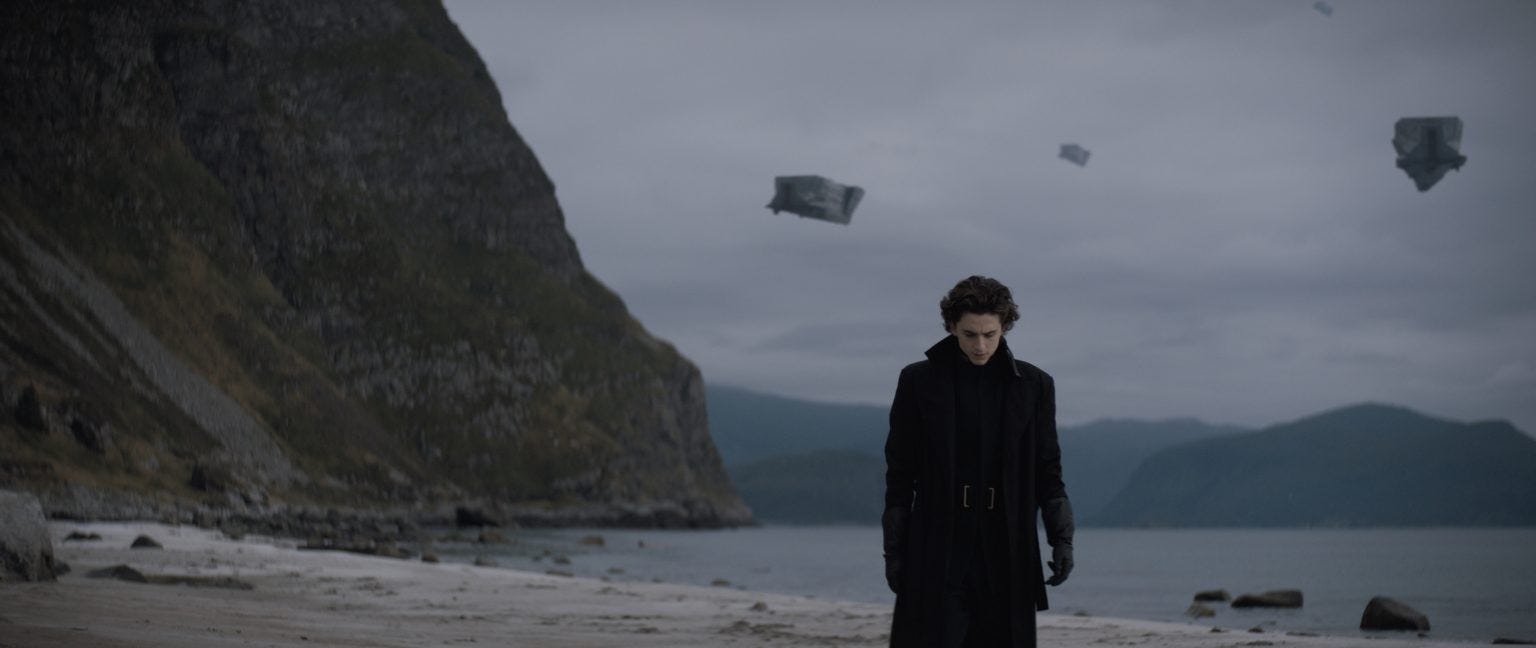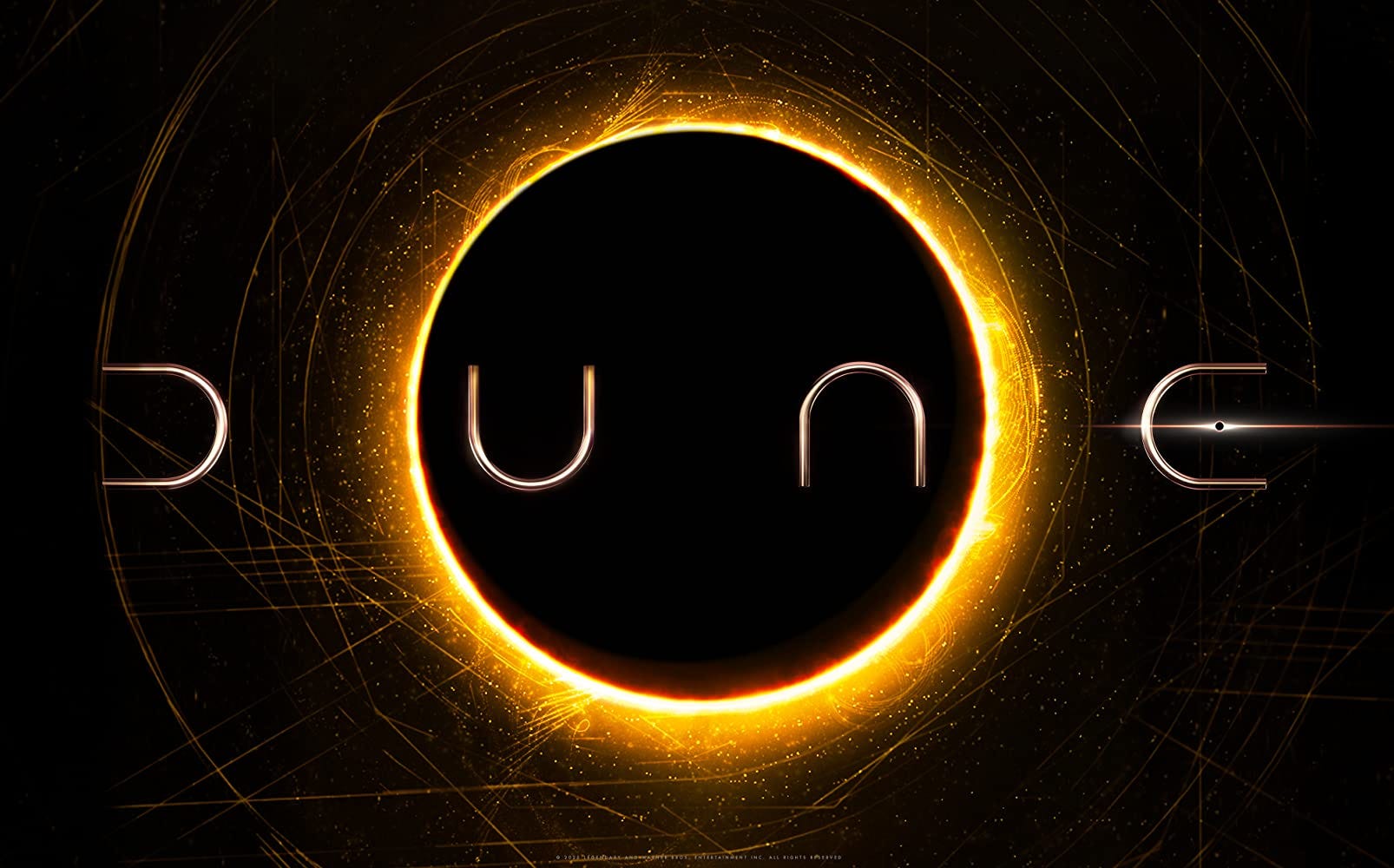The Science Fiction Classic Still Has A Lot To Teach Us
About twenty miles north of Coos Bay, on the west coast of Oregon is the Oregon Dunes National Recreation Area. It is a very unique place. Roughly 40,000 acres of sweeping sand that wave as far as you can see, mountains that move if you look away for too long. It’s mesmerizing. Today you can hike, swim, camp, or get on an ATV and ride across the sand. It’s a popular attraction for locals and tourists.
In 1957, however, a young journalist named Frank Herbert traveled to this halting-place on assignment, to look into USDA actions in the region. He planned to write an article called “They Stopped The Moving Sand.” He did not finish it. Instead, he saw something else in the sand. Something that, eight years later, would become “Dune.”
“Dune” tells the story of the young boy Paul. Paul’s father, Duke Leto, and his mother, Lady Jessica are heads of the great house Atreides. The Duke has been assigned by the Padishah Emperor Shaddam IV to relocate his family and his house from the rich ocean planet Caladan to the harsh desert planet Arrakis. Arrakis (also called “Dune”) is desolate and inhospitable, a cruel and unforgiving wasteland whose only saving grace is melange, or “the spice,” a rare substance that, when harvested, puts years on the end of your life and enhances your mental capabilities. What follows when House Atreides arrives on Arrakis, and the fate of the young boy Paul, is an ambitious trek across genres and generations that, 55 years later, is certainly the greatest epic in science fiction.
This year will see another big-screen revival* of Herbert’s classic, this time directed by Denis Villeneuve. Villeneuve’s film promises to be epic. With a fully stocked cast led by Timothee Chalamet and including Zendaya, Rebecca Ferguson, Oscar Issac, Jason Momoa, Josh Brolin, and many others, the hype around the film has grown considerably. So much so that novel “Dune” shot back up onto the bestseller lists in recent months as many readers have been eagerly returning to the series, or picking it up for the first time.

As “Dune” continues to work its way back into the social consciousness, I believe it is worth revisiting some of the novel’s core themes, and considering them in the light of 2020.
Environmentalism and Ecology
“The highest function of ecology is understanding consequences.” — Pardot Kynes
The major conflict on Arrakis is one between acquisition and conservation. Imperial powers seek to suck the remaining value from Arrakis, and harvest its spice, while the Atreides and the Fremen, who are the native inhabitants of Arrakis, fight for a planet habitable by all.

Central to this conflict is the novel’s treatment of water. Water is sacred to the Fremen, all of whom wear “stillsuits,” air-tight bodysuits that are designed to recapture all of the body’s moisture released through sweating and urination and then filter it to be consumed again. When an individual dies, the Fremen “take their water” and repurpose all the moisture from their corpse. To the Fremen, water is more sacred than death. The fight over these resources, spice and water, is what propels the novel forward.
Immediately images come to us of modern-day wars fought over oil and other natural resources, and of some of the crippling droughts that have struck places like California in the last decade. These are harsh bridges between Herbert’s fiction and our reality.
When we meet the Fremen, their leader is the planetary ecologist Liet Kynes. Liet is the leading light when it comes to Arrakis’s climate and environment. As such, he is revered among the Fremen, who are able to thrive on Arrakis chiefly because they are so well versed in ecology. Liet’s late father, Pardot Kynes, says:
“The highest function of ecology is understanding consequences.”
The fact that the Fremen are led by a planetary ecologist is case in point of their dedication to environmentalism. They are a people completely in tune with their natural world, and their lives are an endless cooperation and reverence to that nature. This is all in stark contrast to the imperial conglomerates that see that planet as nothing more than a farm and an opportunity for growth.
In an age of climate change alarmism and denial, it is frankly harrowing to hear this message in the context of the twenty-first century. Herbert was especially prescient when it came to ecology. He had an avid interest in environmental preservation, a need to stop humankind from “using up” the planet’s resources, to protect future generations. As the Trump administration continues to scale back environmental protections, and as each consecutive year continues to be the hottest year on record, it seems that Herbert’s vision of a planet drained of its resource and habitability is shockingly close.
“Dune” is a warning, a warning that if we do not understand the consequences of our treatment of the environment, it will turn on us. The great irony is that as the characters in “Dune” continually fight for a planet more habitable than their own, we push on in the opposite direction.
Heroism and The White Savior
“I am the Kwisatz Haderach. That is reason enough.” — Maud’Dib
The critical reception of “Dune” is far from perfect. Among these critiques are push-backs on the novel’s treatment of women — more on that later — and that it is a white savior story.
At the surface, it’s hard to refute that. After tragedy strikes the Atreides on Arrakis, Paul and Jessica join the Fremen, where Paul becomes known as Maud’Dib. The Fremen, who were inspired by many indigenous cultures, and who the imperials in the story like to think of as desert savages, revere Maud’Dib. Maud’Dib leads the Fremen in an epic battle against tyranny and assumes his position as their messianic savior. He who legend calls the “Kwistaz Haderach.” In this regard, Paul Atreides quite literally is a white savior.

It is debatable, however, whether Paul Atreides really saves the people of Arrakis, or if he sets them up for a much more ominous fate in the long term. “Dune” lives as part of an expansive series of books published by Frank Herbert, and later his son Brian Herbert. There are a multitude of prequels and sequels that expand and continue the story of Paul Atreides, and it is here that we see the repercussions of Maud’Dib’s deification. Without getting too deep into the mythos, it unfolds that Paul’s actions as a leader and a savior paved the way for further and far more serious conflicts for later generations in the “Dune” saga.
This is one of the central messages of “Dune,” a mistrust of self-proclaimed messiah figures. Herbert deliberately wanted to poke holes in the “superhero syndrome” that we often fall victim to in fiction and in reality, and of the idea that history is paved by infallible leaders. As Perdot Kynes puts it:
“No more terrible disaster could befall your people than for them to fall into the hands of a Hero.”
But to get to that point in the story and to see those resounding repercussions, the reader has to work through multiple volumes of expansive world-building. Not that this is a chore, Herbert’s later books (although not as well received by critics) are still great reading if you love the “Dune” universe. But for the reader who finishes just “Dune” itself, it is hard to escape the black and white reality that the protagonist, Paul Atreides, is a white man who liberates the Fremen, who are depicted as people of color.
Contemporary Hollywood is riddled with instances of this subversive theme, and at a time when the role of whiteness is being rightfully picked apart in our literature and our cinema, it is crucial that we look at “Dune” through the same lens. As readers, we can still be enamored by Herbert’s storytelling and invested in his characters, while at the same time cognizant of its employment of the white savior trope.
Gender Dynamics
“History will call us wives” — The Lady Jessica
It would be impossible to discuss the role of women in “Dune” without starting with a discussion of The Lady Jessica, Paul’s mother. Jessica is a member of the Bene Gesserit, a secretive matriarchal order of women who train their bodies and minds to have exceptional wisdom and control over other people. Those who demonstrate a mastery of the Bene Gesserit abilities become known as Reverend Mothers and are revered. In “Dune,” Jessica becomes one of those figures, and her relationship with Paul is tested as they navigate their new identities on Arrakis.
Jessica is a concubine to Duke Leto, but this by no means makes her powerless. She wields enormous influence over Leto and others. In fact, it can be argued that the Bene Gesserit as an entity are the most powerful in the “Dune” universe. Although they masquerade as concubines and as subservient to others, their powers of persuasion permeate the entirety of the novel’s power structure. Even the Padishah Emperor has a Bene Gesserit whispering in his ear. Jessica is not maniacal, however. In fact, as Maud’Dib approaches a godlike existence, it is Jessica’s humanity that keeps the reader tethered.
Another key female figure in the story is Chani, a young Fremen woman and daughter of Liet Lynes. Chani is Paul’s love interest in the story and eventually, the mother of his children.

Chani is introduced with authority. When Paul and the Lady Jessica are intercepted by Fremen after fleeing an attack on the Atreides, it is Chani who first takes Paul under her wing and begins to teach him the ways of the desert. As their relationship develops, she is revealed to be a skilled fighter and a keen strategist in combat. Although she is strong, Chani is submissive. It is the case that once she becomes a mother, she is sidelined from the action of the story. Paul acts to keep her away from the fighting that precipitates in the final third of the book.
Although for political reasons, Paul Atreides ends up marrying the Emperor’s daughter, the Princess Irulan, Paul assures Chani that his devotion to her is paramount, saying:
“I swear to you now … that you’ll need no title. That woman over there will be my wife and you but a concubine because this is a political thing… Yet that princess shall have no more of me than my name. No child of mine nor touch nor softness of glance, nor instant of desire.”
A heartfelt gesture from Paul, but there is no escaping the fact that Paul’s motivation to establish order and cement power are eclipsing his obligation to Chani.
Jessica adds to this, in the closing line of the story:
“Think on it, Chani: that princess will have the name, yet she’ll live as less than a concubine — never to know a moment of tenderness from the man to whom she’s bound. While we, Chani, we who carry the name of concubine — history will call us wives.”
Powerful, as the conventionally marginalized concubines are empowered, but there is a subversive truth here. As Jessica says, history will not remember them as heroes, nor as fighters, but as wives. Despite their heroism and contribution, the aspiration remains to be known as a wife. Simply a title of marriage.
It is said that in Villeneuve’s film, the role of the Lady Jessica is being expanded to better reflect the gravity of her character and her importance to the story. Until then, it is clear that while the women in “Dune” are powerful, they are not in power. They operate within a patriarchal society and, much like with the white savior trope, there is little we can do to escape that. What we can do is use that reality as leverage to more vigorously critique and interact with the text. A work of “Dune”‘s caliber can certainly withstand it.
Imperialism and The Decline of Empires
“In politics, the tripod is the most unstable of all structures.” — Reverend Mother Gaius Helen Mohiam
“Dune” is set against an imperial galactic backdrop. The “tripod” refers to the three dominant powers at work in the story. The Spacing Guild, which is an organization that has a monopoly on interstellar travel, The Imperial House, or the authority of the Padishah Emperor, and the Landsraad, or the organization of the Great Houses of the Imperium (house Atreides being one of them).
Simply put, these three power structures are balanced against each other, one cannot withstand the collective force of the other two. At the time of the book’s start, the Imperium is under the control of the 81st Padishah Emperor Shaddam IV, who pushes and pulls on the authority of the other two forces.
By the end of the book, he is replaced by Paul “Maud’Dib,” whose prescience and control of the spice gives him unprecedented power. Paul dissolves the empire and assumes complete control of the Spacing Guild and the houses of the Landsraad.
The arc of the empire in “Dune” has been traced over a few historical upheavals, most notably the fall of the Roman Empire. But transposed onto today, the story has more dubious undertones. It seems like today we are witnessing sort of a change in imperial power. American exceptionalism around the world is being challenged and the role of the United States on the world stage is being put into question. Cultural norms are being uprooted and the feeling of change, for the better and for the worse, is permeable.
In “Dune,” Paul has the capability of future sight. His genetics and reaction to the spice give him the ability to see time as it will be, stretched out in front of him in a series of strings. This is what enables his miraculous rise to power and what keeps him in power for so long.
As previously discussed, Herbert frowns on the idea that one individual can lead the way forward in a society, and yet it seems so often that in contemporary culture, we look for those people to turn into beacons. Even Paul Atreides, with all his superhuman ability, is unable to steer the reins of time away from tragedy.
The dedication to the community, on the other hand, is what “Dune” gives us as a way to move forward. The Fremen are fiercely loyal to each other and this commitment to a shared sense of values has enabled their success even on Arrakis, where the great Imperial forces failed. Herbert gives us the Fremen as an example of how ties of community are what strengthen and empower a people, irrespective of what sort of savior may appear to try and lead them.
In Conclusion

With all its complexity and nuance, “Dune” still has a lot to teach us. Both where it excels, and where it doesn’t.
In anticipation of the upcoming film, the excitement around the “Dune” saga has flared up again. It is worth noting that this is not the first “Dune” adaptation. Most notable is the 1984 David Lynch adaptation. That film was poorly received by critics and by the public, and perhaps left a bad taste in our mouths when we consider a Dune film.
It’s worth noting that the upcoming film will in fact be the first in a two-part series, and will only cover the first half of the book. Hopefully, the extra screen time gives the filmmakers more runway to try and capture the grandeur of the book.
“Dune” is a must-read. Whether you read it alone or dive into the extended universe with all the prequels and sequels, the fact that it has remained impactful this long after its release is reason enough to give it a read.
The updated edition of the book published by ACE publishing includes an afterword by Brian Herbert. In it, he says that “Dune” is a “modern-day conglomeration of familiar myths.” It is clear that those myths have continued to reinvent themselves for as long as “Dune” has been occupying our imaginations. Whether or not the Villeneuve film does the story justice is to be determined. In fact, the “Dune” saga has yet to be completed. Brian Herbert is still working on completing the supplementary books and finishing the task his father started. In the meantime, and long after, as Brian Herbert says, “We can always go back to Dune and read it again and again.”
*At the time of writing this, the expected release date is December 18, 2020. That being said, due to the ongoing public health crisis, it is uncertain whether we will be able to see Villeneuve’s film in cinemas this year, via streaming, or if the release will be postponed. All the images shown here are from the upcoming film.
Deets Sharma is frankly just happy to be here. You can follow him on Medium, connect on LinkedIn, and reach out to him at [email protected].

